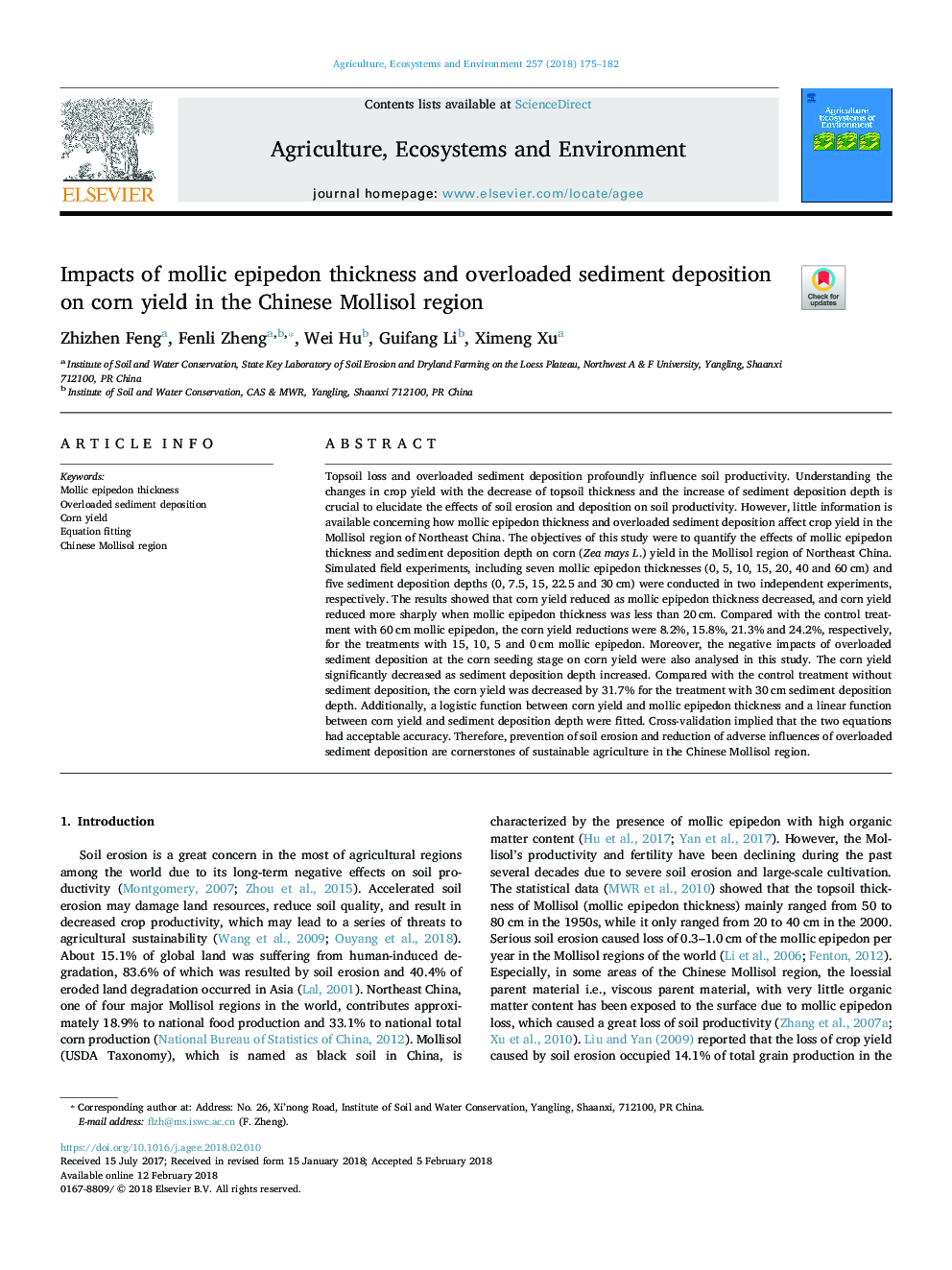| Article ID | Journal | Published Year | Pages | File Type |
|---|---|---|---|---|
| 8487150 | Agriculture, Ecosystems & Environment | 2018 | 8 Pages |
Abstract
Topsoil loss and overloaded sediment deposition profoundly influence soil productivity. Understanding the changes in crop yield with the decrease of topsoil thickness and the increase of sediment deposition depth is crucial to elucidate the effects of soil erosion and deposition on soil productivity. However, little information is available concerning how mollic epipedon thickness and overloaded sediment deposition affect crop yield in the Mollisol region of Northeast China. The objectives of this study were to quantify the effects of mollic epipedon thickness and sediment deposition depth on corn (Zea mays L.) yield in the Mollisol region of Northeast China. Simulated field experiments, including seven mollic epipedon thicknesses (0, 5, 10, 15, 20, 40 and 60â¯cm) and five sediment deposition depths (0, 7.5, 15, 22.5 and 30â¯cm) were conducted in two independent experiments, respectively. The results showed that corn yield reduced as mollic epipedon thickness decreased, and corn yield reduced more sharply when mollic epipedon thickness was less than 20â¯cm. Compared with the control treatment with 60â¯cm mollic epipedon, the corn yield reductions were 8.2%, 15.8%, 21.3% and 24.2%, respectively, for the treatments with 15, 10, 5 and 0â¯cm mollic epipedon. Moreover, the negative impacts of overloaded sediment deposition at the corn seeding stage on corn yield were also analysed in this study. The corn yield significantly decreased as sediment deposition depth increased. Compared with the control treatment without sediment deposition, the corn yield was decreased by 31.7% for the treatment with 30â¯cm sediment deposition depth. Additionally, a logistic function between corn yield and mollic epipedon thickness and a linear function between corn yield and sediment deposition depth were fitted. Cross-validation implied that the two equations had acceptable accuracy. Therefore, prevention of soil erosion and reduction of adverse influences of overloaded sediment deposition are cornerstones of sustainable agriculture in the Chinese Mollisol region.
Keywords
Related Topics
Life Sciences
Agricultural and Biological Sciences
Agronomy and Crop Science
Authors
Zhizhen Feng, Fenli Zheng, Wei Hu, Guifang Li, Ximeng Xu,
